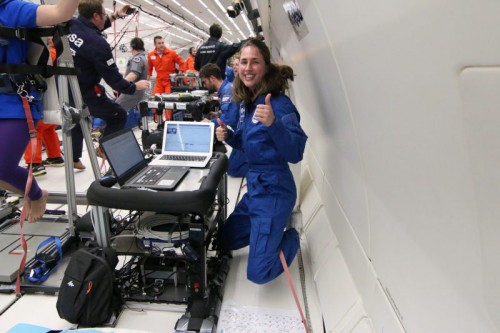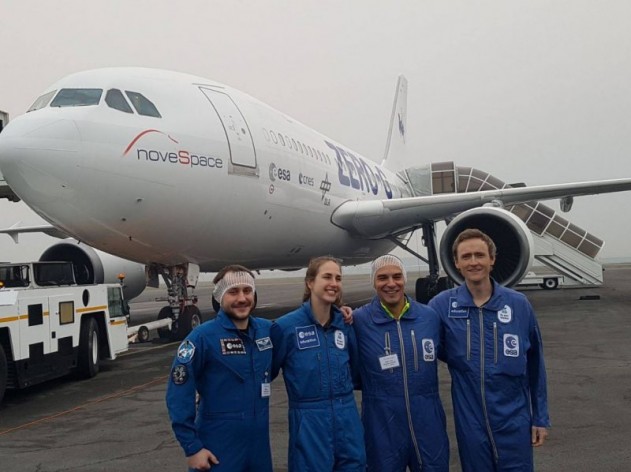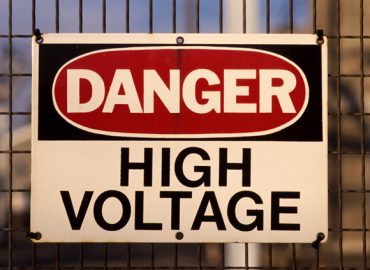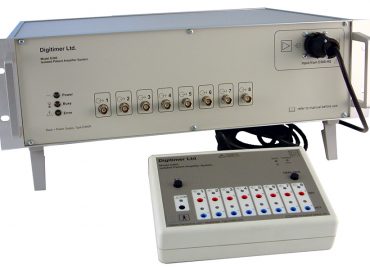Galvanic Vestibular Stimulation and the DS5 Bipolar Stimulator
Research aboard the “Vomit Comet” and a Novel Treatment for Seasickness
The Digitimer DS5 Isolated Constant Current Stimulator was originally developed to facilitate and semi-automate threshold-tracking studies of nerve excitability. The DS5 accepts an analogue voltage waveform input, which it uses as a “command” signal, determining the duration and amplitude of a series of current stimuli defined by the specialist QtracW software. However, because the DS5 may be controlled by arbitrary voltage waveforms and output proportional isolated current equivalents, researchers involved in galvanic vestibular stimulation (GVS) have found it particularly suitable for their research. Here we examine two case studies where the DS5 has made the perfect galvanic vestibular stimulator.
Investigating how gravity contributes to the response to artificial vestibular stimulation
In 2017 Digitimer supplied DS5’s to a project being operated within the European Space Agency’s “Fly your Thesis” scheme. The project was being undertaken by the VESTAND team, which was comprised of a group of Dutch students from the Erasmus Medical Centre and Delft University of Technology, trained in biomedical and engineering sciences, working with a post-doctoral fellow and professor from Erasmus MC. VESTAND participated as one of the student teams chosen to ‘fly’ their galvanic vestibular stimulation (GVS) experiment.
The “Fly your Thesis” scheme relies on the use of the specially converted “Zero-G” Airbus A310 aircraft, which is operated by a division of the French Space Agency (Novespace) and allows occupants of the aircraft to experience 20 second episodes of micro-gravity up to 30 times in a single flight. The project examined how gravity modulates the vestibular contribution to perceptions of self-motion and the ability to stand upright.
Electrical vestibular stimulation, generated by a pair of Digitimer DS5’s was used to artificially activate the vestibular system (i.e. the balance organ) in human volunteers. This electrical stimulation evokes an artificial perception of motion and postural reflexes during standing balance. The medically CE-approved DS5 stimulator is able to deliver isolated stimuli generated by “noisy” arbitrary voltage waveforms and is ideally suited to GVS experiments such as these. To learn more about how the DS5’s were used, please take a look at our blog article – The Ups and Downs of Vestibular Stimulation Research.
Examining a potential role for GVS in the treatment of seasickness
More recently, scientists including several based at the Israel Naval Medical Institute, have used the Digitimer DS5 to examine something that would clearly have implications for a group of sailors on board a military vessel – seasickness. Seasickness is estimated to affect up to 75% of the crew of military vessels in moderate sea conditions and while the vast majority of crew members are able to adapt, a significant percentage remain chronically susceptible. As the vestibular system plays a vital role in the mechanism of habituation to motion sickness and as with the VESTAND team, the DS5 was used to artificially influence the vestibular system.
The authors of the paper, which was published in Experimental Brain Research, selected 30 Israel Navy sailors for their study and split them into blinded control and treatment groups. Tests used a rotatory chair system, which is typically employed for vestibular system diagnostics, via monitoring of eye movements during rotation. They measured parameters including the vestibular time constant (Tc), which serves as a marker for seasickness adaptation, and additionally employed galvanic vestibular stimulation (GVS) to modulate the neural feedback from the vestibular system. GVS was applied to the mastoid processes via a Digitimer DS5, using white noise modulated current with alternating polarity at a frequency of 0.017Hz. Importantly, the GVS was delivered at the inverse phase to chair rotation in the “yaw” axis.
The authors found that the GVS rotatory chair procedure decreased the prevalence of severe seasickness and that the treated group showed a reduction in Tc, suggesting habituation to seasickness. The treated group also showed a reduced requirement for sickness clinic visits or anti-motion sickness medication. In conclusion, this technique could offer a novel method to treat motion sickness in susceptible individuals.
Gutkovich, Y.E., Lagami, D., Jamison, A. et al. Galvanic vestibular stimulation as a novel treatment for seasickness. Exp Brain Res 240, 429–437 (2022).
https://doi.org/10.1007/s00221-021-06263-w
Demonstrating the effects of GVS
If you are interested in seeing a simple but highly effective practical demonstration of the effects of GVS on balance, then take a look at the TEDx talk by Adam Toth from the University of Guelph. As part of his presentation, Adam shows how GVS can be used to disrupt the vestibular system making it difficult to land a jump or even walk in a straight line.
Want to find out more?
If you are interested in learning more about how the Digitimer DS5 may be utilised for GVS research, please do not hesitate to get in touch with us or contact one of our representatives.





